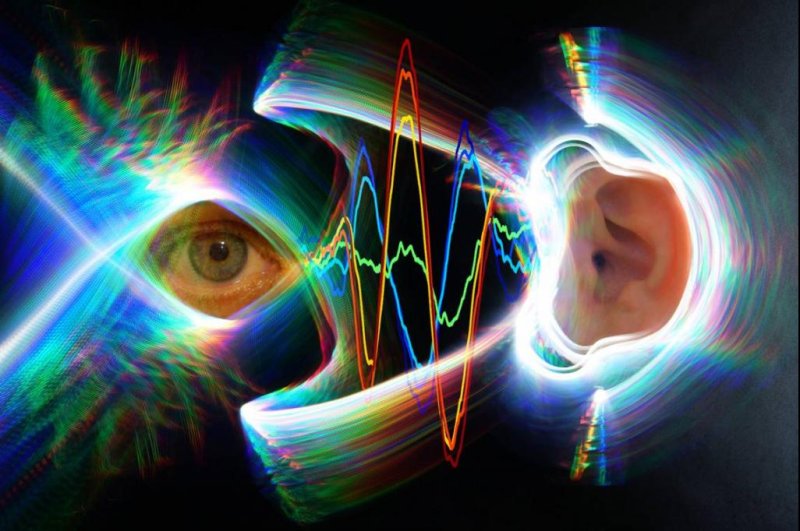New research shows the human auditory and visual systems are part of an interconnected motor control system in the brain. Photo by Duke University
Jan. 23 (UPI) -- New research shows the eyes and ears are both part of an integrated motor control system in the brain.
When researchers at Duke University measured the movements of eyes and eardrums in test subjects, they found eardrum vibrations proceeded the movement of the eyes, even as subjects' heads remained still.
"It's like the brain is saying, 'I'm going to move the eyes, I better tell the eardrums, too,'" Jennifer Groh, a professor of psychology and neuroscience at Duke, said in a news release.
Groh and her colleagues published their findings this week in the journal Proceedings of the National Academy of Sciences.
But while it's apparent the brain has organized sight and sound in a way that prioritized synchronization, it's not clear exactly how the two systems are integrated. Visual and auditory cues are processed in very different ways.
"Our brains would like to match up what we see and what we hear according to where these stimuli are coming from, but the visual system and the auditory system figure out where stimuli are located in two completely different ways," said Groh. "The eyes are giving you a camera-like snapshot of the visual scene, whereas for sounds, you have to calculate where they are coming from based on differences in timing and loudness across the two ears."
During tests, 16 participants sat in a dark room and attempted to trace the path of a shifting LED light with their eyes. Tiny microphones in each participant's ear canals measured the sound of their eardrums moving back and forth.
The eardrum's movements are typically triggered by outside sounds, but the brain can also dictate movement using hair cells in the cochlea and tiny bones in the middle ear. When the brain triggers the movement of the eardrum, the process produces faint vibrational sounds called otoacoustic emissions.
The tests showed both eardrums move in coordination with the direction of the moving eyes. One eardrum will shift inward while the other shifts outward. More drastic eye shifts also inspired greater eardrum vibration.
"The fact that these eardrum movements are encoding spatial information about eye movements means that they may be useful for helping our brains merge visual and auditory space," said David Murphy, a doctoral student in Groh's lab. "It could also signify a marker of a healthy interaction between the auditory and visual systems."
Researchers are now looking into how these eardrum shifts alter the ways humans hear and perceive incoming sounds.















